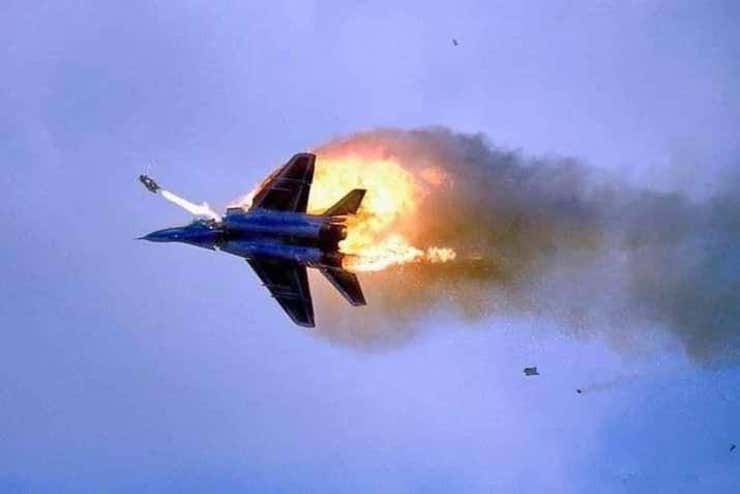Everyone’s eyes are set on battered Ukraine right now after Russian President Vladimir Putin gave the order to invade the Eastern European country in the early hours of Thursday. According to American sources, Russian forces began their attack with an onslaught of over 100 missiles from both land and sea, along with 75 fixed-wing bombers, targeting arms and ammunition depots, air defense systems, military headquarters, airports, and other strategically-significant targets.
But as if the bombs raining down from the sky weren’t enough, terrified Ukrainian civilians have to deal with another type of bombing: fake news through the airwaves.
These include false videos shared on social media and messaging apps like Telegram, a popular instant messaging service in Eastern Europe, meant to sow confusion about the reality on the ground.
Both sides are employing the usual wartime propaganda, but the Kremlin seems to be more active and effective at spreading false information.
Many of this fake footage is posted by anonymous social media users, which could be either agents directly connected to the Kremlin or internet trolls that get off sowing chaos and racking thousands of likes. The information war is now in full swing, with propaganda operations mustered well before the war started as Russia filmed and shared staged provocations meant to paint Ukraine as an aggressor to the Russian public.
Fake: Russian paratroopers
One of the most widely shared videos featured what looked like hundreds of Russian soldiers parachuting over Ukraine. The video, however, is from 2016, part of a Russian military exercise. However, this didn’t stop the video from raking over 22 million views in its first day making the rounds on Twitter and TikTok.
Like other fake videos, it has been picked up by legitimate international news outlets which should have known better before publishing unverified footage.
Video game posing as wartime footage
One of the widely shared videos since the conflict began supposedly shows live attacks on Ukraine Russia, with a jet dodging heavy antiaircraft fire. But the footage is actually from Arma III, a realistic video game. This particular fake video was shared over 25,000 times before it was taken down from Facebook and Twitter, although it keeps popping up from various sources.
Another viral video shows Ukraine firing anti-aircraft missiles into the night. But in reality, it was another animated footage from the video game War Thunder.
It’s not the first time that a video game has posed as genuine wartime footage. In 2018, Russian Channel One TV aired a program praising the country’s military action in Syria. The program used gun-sight footage of a truck being attacked by Russian forces, but the images were, yet again, from Arma III.
Russian plane downed over Ukraine was actually shot down over Libya in 2011
A video shared on Facebook on February 24 shows a plane falling from the sky and bursting into flame, with the headline “REPORTED AS: Ukrainian army shot down a Russian jet.” The video later made the rounds on YouTube and Twitter, where it generated hundreds of thousands of views.
Although the footage is real, it was captured in Benghazi, Libya, more than a decade ago. “Libyan rebels shot down a warplane that was bombing their eastern stronghold Benghazi on Saturday, as the opposition accused Moammar Gadhafi’s government of defying calls for an immediate cease-fire,” the Associated Press reported at the time.

Another fake image that went viral shows a Russian jet at the exact moment it is being destroyed. It’s a spectacular image, which explains why it was shared thousands of times. But by now you’ve spotted a pattern: this is actually an old picture from 2017 during an airshow accident.
Fact or fiction: more challenging than ever
Although the internet can be a great tool for fact-checking, the reality is that most people exposed to emotionally appealing content fail to do their own research. Seeing hundreds of soldiers parachuting over the sky is a shocking image, and it’s understandable that people feel the urge to share such footage with the world. But that’s the exact behavior that nefarious agents are banking on, looking to dupe unwitting social media users into sharing falsehoods.
This is why it’s important to think critically and assess whether the information in front of you is accurate and comes from a credible source. It always helps to take just a few moments and Google something before sharing it.
Unfortunately, the current online environment leaves a lot of room for sketchy sources to fill the void. For Ukrainian people, this problem is exacerbated by internet outages experienced across several parts of the country. Some of these outages are caused by shelling, airstrikes, and other damages to critical internet infrastructure, while others are part of a concentrated effort by Russian forces to disrupt communications and sow panic.
In order to protect yourself from misinformation, it’s good to remember one thing about social media posts: they’re designed to get a reaction, especially the viral kind. Although footage showing violence and bloodshed is nerve-wracking and tempting to post online for others to share the outrage, it’s better to calm down for a second and wonder: am I just being duped here?



